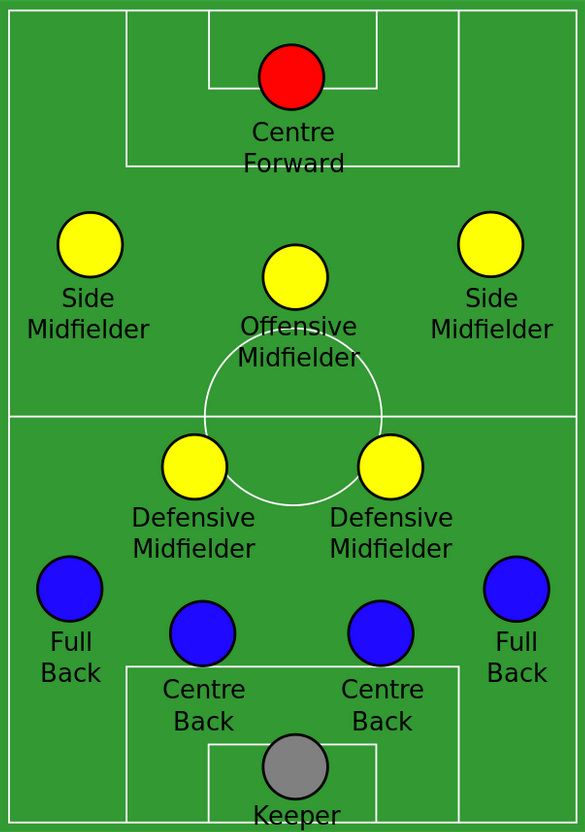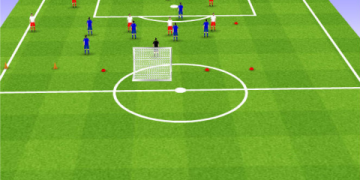# Introduction: What Is the Real Answer to How Many Players on the Soccer Field?
It’s THE question every soccer newbie—and even some fans—find themselves asking: HOW MANY PLAYERS ON THE SOCCER FIELD at one time? If you’re watching a professional match or organizing a youth game, this detail is essential. So, let’s break it down: not just the simple number, but what it means in different contexts, how rules vary, and why knowing this can massively impact your understanding of the game.
# The Official Rule: How Many Players Per Soccer Team?
The LAWS OF THE GAME, governed by FIFA, dictate that each team fields 11 players during an official match. This includes one goalkeeper and ten outfield players. That means, at any standard kickoff, there should be 22 players on the pitch.
But does this always hold true? Well, things change due to red cards (sending off) or other rare circumstances. However, under normal conditions:
– Each team: 11 players
– Both teams together: 22 players on the soccer field
(来源: FIFA Laws of the Game 2023/24)
# Exceptions: When Are There Fewer Players on the Soccer Field?
SOCCER ISN’T ALWAYS PREDICTABLE. Sometimes, you’ll spot less than 22 players on the field. Here’s why:

– AFTER A RED CARD: If a referee shows a red card, a player is sent off, and their team plays with 10 (or even fewer) players for the remainder of the match.
– INJURIES WITHOUT SUBSTITUTIONS: A team reduced by injury and no substitutes drops below 11 players.
– YOUTH AND AMATEUR LEAGUES: These games often have smaller teams—sometimes 7v7, 9v9, or 5v5 formats depending on age and field size.
– MINIMUM NUMBER: According to FIFA, a match cannot continue if a team has fewer than 7 players.
So, how many players on the soccer field as the bare minimum? The answer—you could see as few as 14 (7 per team) before a match is stopped.
# Comparing Different Soccer Formats (HTML Table)
Soccer isn’t a “one-size-fits-all” game. Check out how player numbers compare in popular variations:
| Soccer Format | Players per Team | Total Players on Field |
|---|---|---|
| FIFA Official 11v11 | 11 | 22 |
| 5-a-side | 5 | 10 |
| 7-a-side (Youth) | 7 | 14 |
| Futsal | 5 | 10 |
| Beach Soccer | 5 | 10 |
As you can see, the answer to HOW MANY PLAYERS ON THE SOCCER FIELD can be quite different in non-traditional games.
# Positions and Player Roles Explained
Understanding how those 11 players fill positions isn’t just trivia; it’s the core of the game! Here’s a basic breakdown:
– GOALKEEPER: Defends the goal, can use hands inside penalty area
– DEFENDERS: Usually 3-5, protect against opponent attacks
– MIDFIELDERS: Often 3-5, balance defense and offense, dictate pace
– FORWARDS: Main goal scorers, stay up front to finish attacks
According to my team’s experience as former coaches, clubs often vary the arrangement (formations) based on tactics. For example, a popular setup is 4 defenders, 4 midfielders, and 2 forwards.
# What Happens When Players Are Sent Off or Subbed?
Surprisingly, matches aren’t always played with full squads throughout. Here’s a typical scenario:
1. Player receives a red card (violent conduct or last-man foul).
2. They must leave the field—no replacement allowed.
3. The team continues with 10 players.
4. If more players are sent off and a team dips below seven, the match is abandoned.
For substitutions, standard FIFA rules allow three per match in most competitions, but this number can rise (like the five allowed during the 2022 World Cup due to health policies).
# Step-by-Step Guide: How to Set Up a Legal Soccer Match
Wanna organize a match that meets FIFA’s requirements? Here’s how you do it, step by step:
1. GATHER YOUR SQUADS: Each team must have at least 7 players, preferably 11.
2. PICK TEAM CAPTAINS: Have someone represent each group for decisions and the coin toss.
3. DESIGNATE POSITIONS: Assign one goalkeeper, then spread remaining players between defense, midfield, and attack according to your chosen formation.
4. CHECK EQUIPMENT: Ensure all players wear the same color kit, proper footwear, and shin guards.
5. VERIFY THE REFEREE: An official must check team sheets, count players, and control the match.
There you go! Stick to these steps, and your soccer match will run smoothly and legally.
# Common Mistakes and Warnings
ATTENTION: DON’T FALL INTO THESE TRAPS!
– MISSING PLAYERS: Teams sometimes try to start with fewer than 7 players. That’s against the rules.
– ILLEGAL SUBSTITUTIONS: Bringing on extra players during play (without notifying the referee) can lead to forfeitures.
– IGNORING VARIATION RULES: Not all leagues follow FIFA’s numbers. Always check local rules before kicking off.
A famous case involved a youth tournament in 2021 where a team was disqualified for fielding 12 players without the referee noticing (来源: BBC Sport).
# Real-World Variations: Why Does the Number Change?
Some international competitions or local leagues may tweak player counts for development or entertainment purposes. For example, youth leagues introduce smaller teams to make the experience fun and manageable.
Besides, in futsal or beach soccer, a smaller playing field makes 11v11 impractical, so 5v5 is the norm. Are you coaching or playing abroad? Double-check local regulations!
# FAQ: How Many Players Can a Team Have on the Bench?
While only 11 can play at once, pro teams typically name up to 12 substitutes—although only a set number are allowed to enter the field. During the 2022 World Cup, teams had 15 bench players and could use up to five substitutes per match (来源: FIFA World Cup Official Regulations).
# Conclusion: Knowing the Numbers Makes You a Smarter Fan
Now you can confidently answer, “HOW MANY PLAYERS ON THE SOCCER FIELD?”—whether it’s a Champions League final, a neighborhood futsal game, or a kid’s birthday scrimmage. Remember, the standard answer is 11 per team, but the details—and exceptions—add depth to your appreciation of the world’s most popular sport.
# Soccer Player Numbers Checklist
– COUNT all starting players (should be 11 per team in standard play)
– DOUBLE-CHECK local league rules for variations (youth, futsal, beach)
– ASSIGN every position, especially goalkeeper
– VERIFY referee is present before starting
– ENSURE all substitutions go through the referee
– DO NOT allow fewer than 7 players per team on the field

– KEEP track of red cards and substitutions during the match
– CONSULT governing body when in doubt about squad size rules
Armed with this guide, you now understand not only HOW MANY PLAYERS ON THE SOCCER FIELD, but also the logic, exceptions, and practical tips behind this key soccer fact!
















